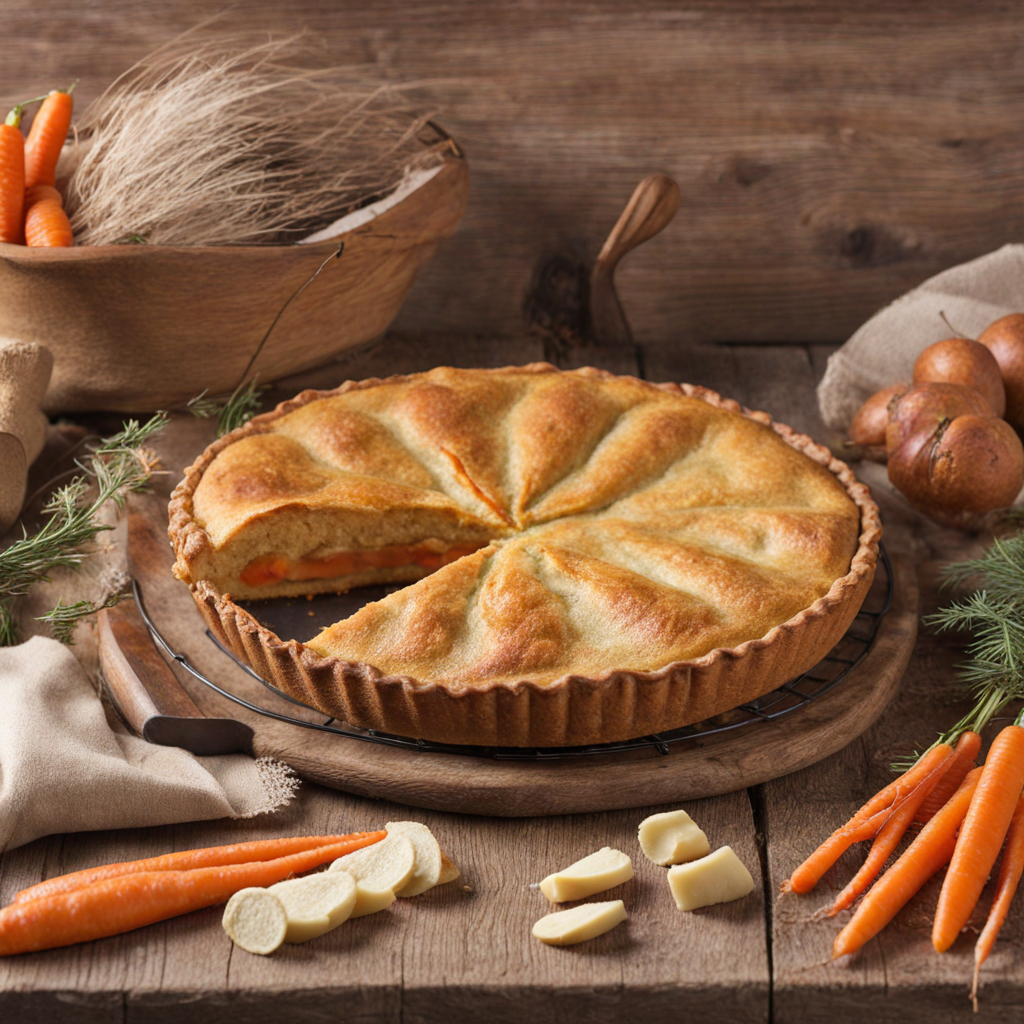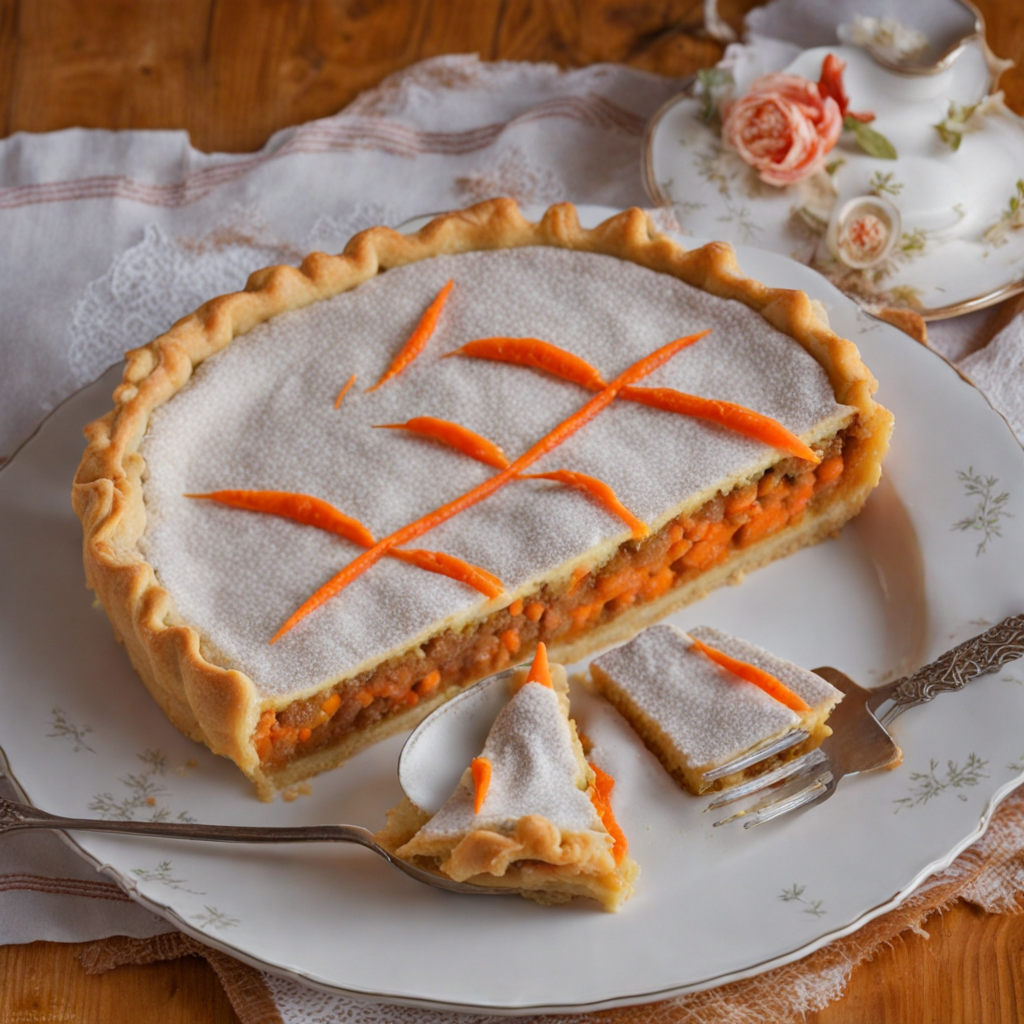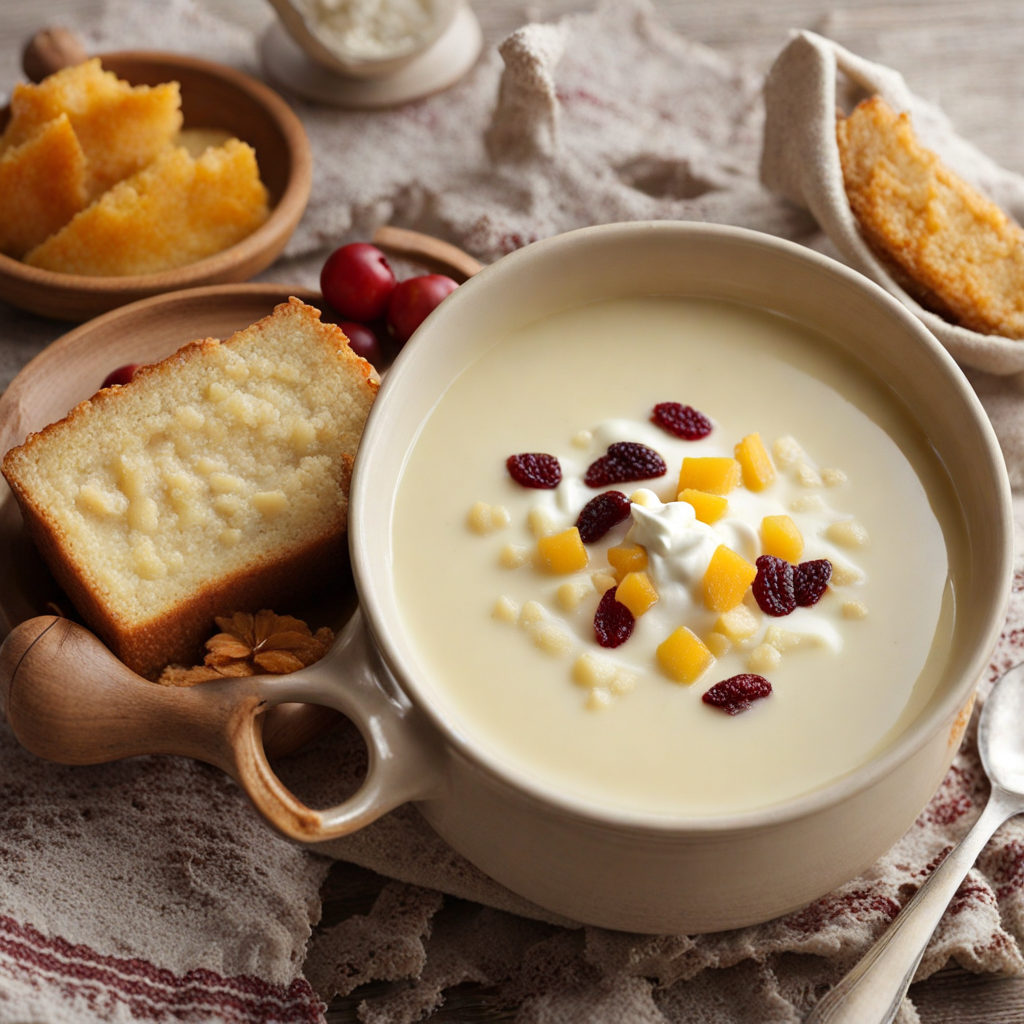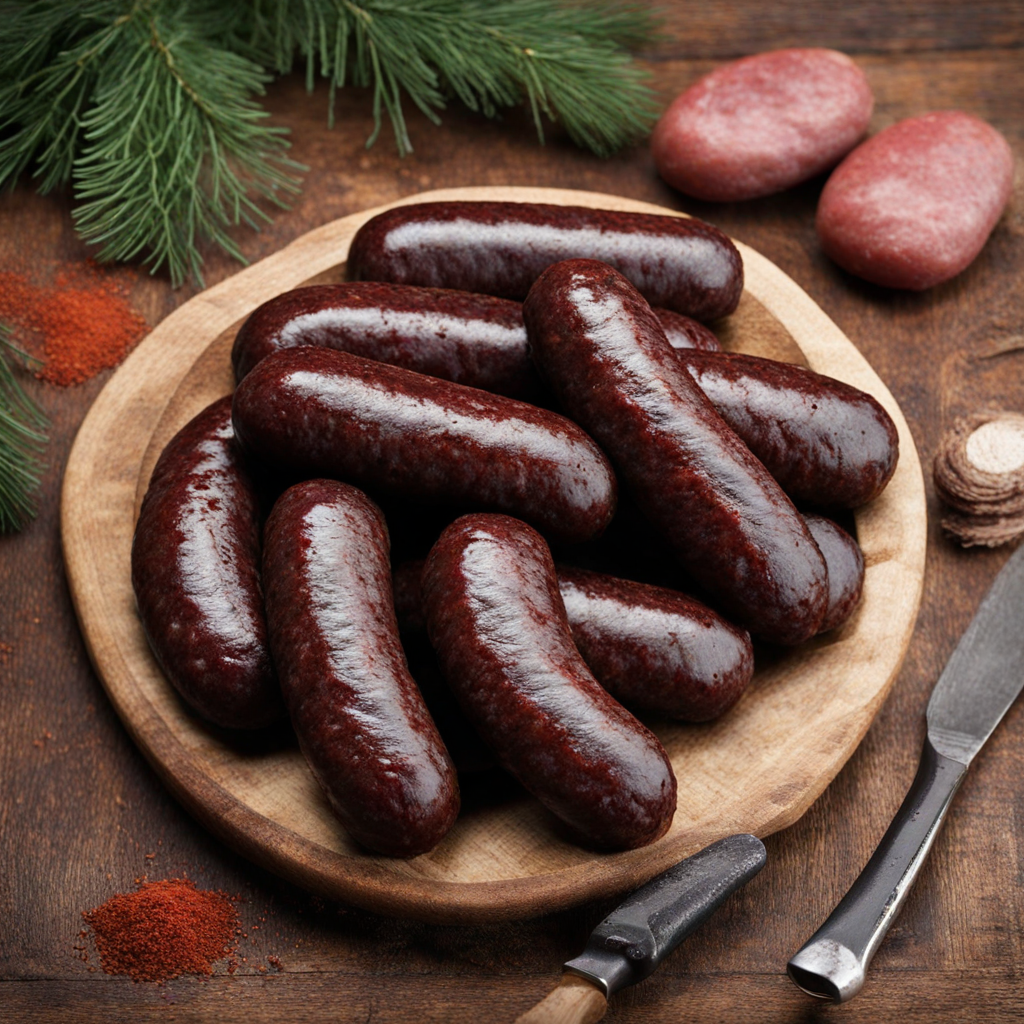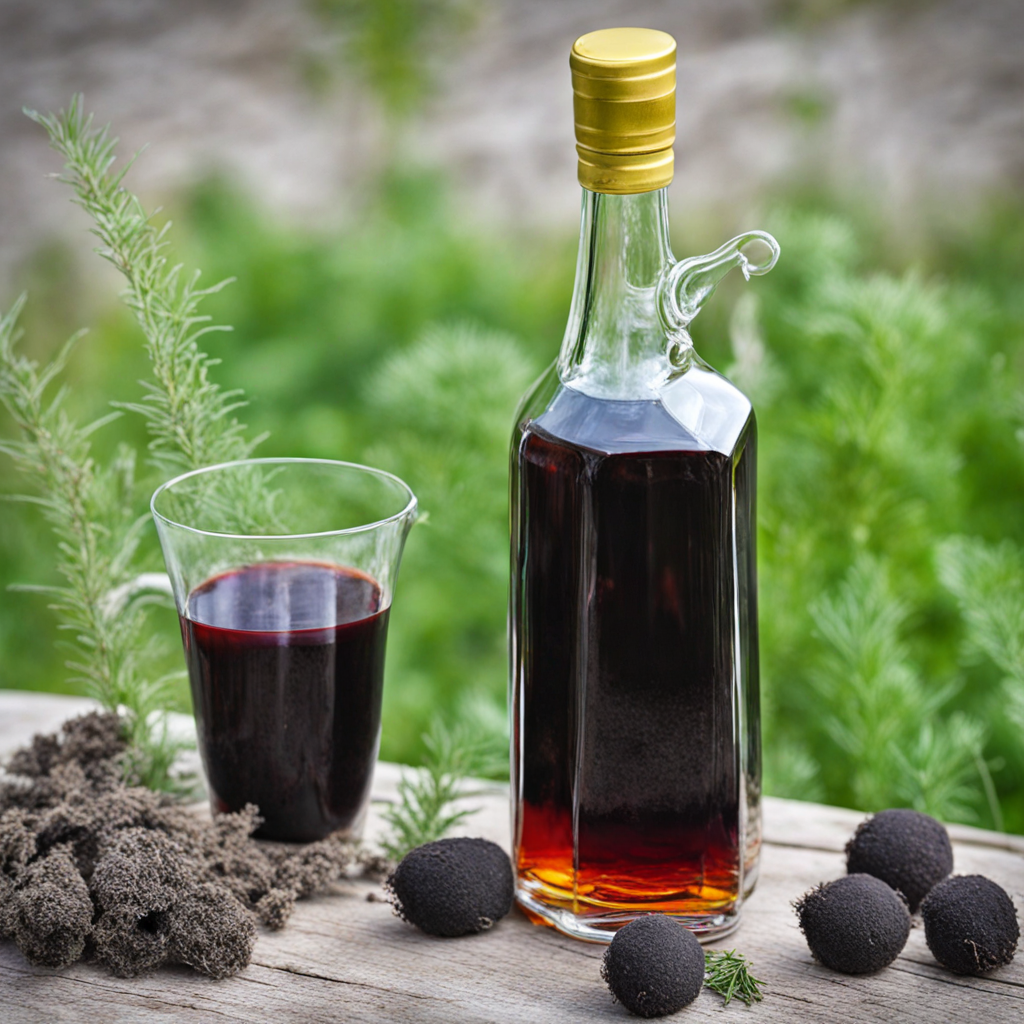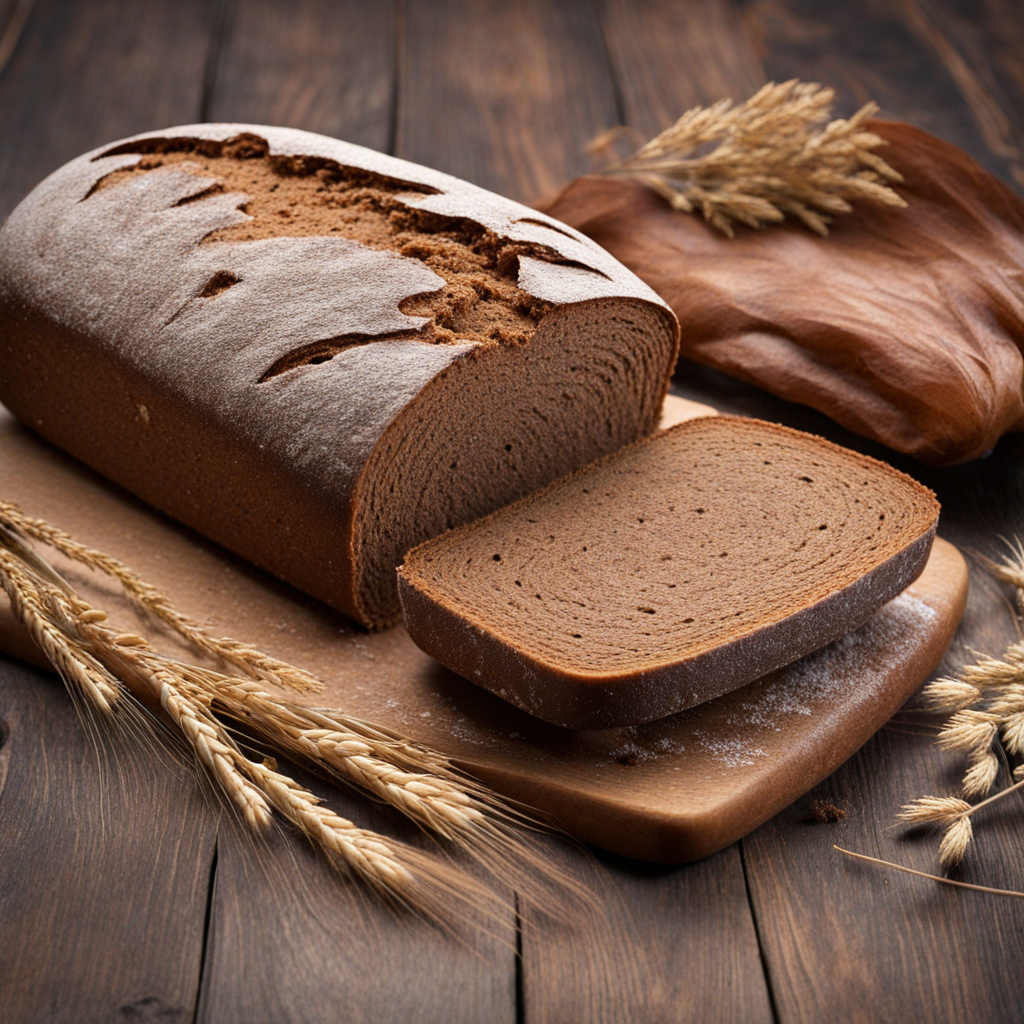Sklandrausis
Sklandrausis is a traditional Latvian pastry that beautifully encapsulates the essence of the country's agricultural heritage and culinary ingenuity. This rustic pie, characterized by its unique combination of flavors and textures, has a history that dates back to the 19th century. Originally, it was a seasonal dish made primarily during the harvest time, particularly in the Kurzeme region of Latvia. Farmers would prepare Sklandrausis to celebrate the harvest of rye and root vegetables, turning simple, locally-sourced ingredients into a delightful and nutritious meal. The flavor profile of Sklandrausis is both earthy and sweet, offering a harmonious balance that reflects its agricultural roots. The crust, made predominantly from rye flour, has a slightly nutty taste and a dense, chewy texture. It serves as a sturdy base for the filling, which is typically a blend of mashed potatoes and carrots, sweetened slightly with sugar and seasoned with spices such as cinnamon or nutmeg. The sweetness of the filling contrasts beautifully with the savory notes of the rye crust, creating a multi-dimensional eating experience that is both comforting and satisfying. Preparation of Sklandrausis begins with the dough, which is crafted from whole grain rye flour, water, and a pinch of salt. The mixture is kneaded until it reaches a smooth consistency before being rolled out into thin rounds. The filling is prepared by boiling and mashing potatoes and carrots together, often mixed with a bit of butter and sugar to enhance the flavors. Once the filling
How It Became This Dish
Origin of Sklandrausis Sklandrausis is a traditional Latvian dish that hails from the regions of Kurzeme and Zemgale. Its roots can be traced back to the 18th century, during a period when rural communities relied heavily on local ingredients and agricultural practices. The name "Sklandrausis" is derived from "sklandrausis," which translates to "round flatbread" in Latvian. This dish is primarily made from rye flour, potatoes, carrots, and spices, creating a unique combination of flavors and textures that reflect the agrarian lifestyle of Latvia. The main components of Sklandrausis include a rye pastry filled with a mixture of mashed potatoes and carrots, seasoned with salt and sometimes sweetened with sugar. This hearty filling is then baked until golden brown, resulting in a deliciously nutty and slightly sweet flavor profile. The use of rye flour is particularly significant, as rye has been a staple grain in Latvia for centuries, symbolizing the resilience of the local population in the face of harsh climatic conditions. \n\n Cultural Significance Sklandrausis is more than just a dish; it is a representation of Latvian heritage and identity. Traditionally, it was a food prepared for celebrations and special occasions, including weddings and harvest festivals. The act of making Sklandrausis often involved the entire family, reinforcing social bonds and community spirit. In this way, the dish transcended mere sustenance, becoming a part of the cultural fabric of Latvian society. Furthermore, Sklandrausis is associated with the celebration of autumn and the harvest season. As the crops were gathered, families would come together to prepare this dish, using ingredients that were abundant and readily available. The preparation of Sklandrausis often involved rituals and customs that highlighted the importance of gratitude and respect for the earth's bounty. This connection to nature and seasonal cycles is a recurring theme in Latvian cuisine, making Sklandrausis a symbol of the country's agricultural heritage. \n\n Development Over Time Over the years, Sklandrausis has evolved, adapting to changes in culinary practices and societal norms. In the early 20th century, as Latvia began to modernize, the traditional methods of food preparation also transformed. While the core ingredients remained the same, the techniques used to make Sklandrausis became more refined. The introduction of baking ovens and the expansion of agricultural practices allowed for greater consistency and access to the necessary ingredients. In recent decades, there has been a resurgence of interest in traditional Latvian foods, including Sklandrausis. As Latvians began to embrace their culinary heritage, efforts were made to preserve and promote the authenticity of this dish. Local chefs and food enthusiasts started to explore traditional recipes, often adding contemporary twists while respecting the essence of Sklandrausis. This revival has led to its inclusion in various food festivals and events, where it is celebrated not just as a dish, but as a representation of Latvian culture and tradition. \n\n Modern-Day Sklandrausis Today, Sklandrausis enjoys recognition both nationally and internationally. It has become a symbol of Latvian cuisine, often featured in restaurants that emphasize local and traditional foods. In 2017, Sklandrausis was awarded the status of a traditional food product by the Latvian Ministry of Agriculture, which further solidified its place in the nation’s culinary landscape. This designation not only serves to protect the traditional methods of preparation but also helps to promote Latvia's rich gastronomic heritage on a global scale. Modern variations of Sklandrausis can be found, with some chefs experimenting with different fillings and flavors. While the classic combination of potatoes and carrots remains popular, innovative chefs have introduced ingredients such as local herbs, cheeses, or even mushrooms, showcasing the versatility of this beloved dish. These adaptations highlight the creativity of contemporary Latvian cuisine while paying homage to its historical roots. \n\n Sklandrausis in Latvian Society The significance of Sklandrausis extends beyond its culinary value; it represents a sense of national pride and cultural identity among Latvians. The dish is frequently featured in cultural events and festivals, where it serves as a reminder of the importance of preserving traditional foods and practices. It is often associated with Latvian folk culture, and its preparation can be seen as a form of storytelling, connecting generations through shared recipes and experiences. In addition to its cultural role, Sklandrausis embodies the values of sustainability and local sourcing. As the world increasingly turns to sustainable food practices, the traditional methods used to make Sklandrausis serve as an example of how food can be both environmentally friendly and deeply rooted in cultural heritage. The emphasis on using seasonal ingredients mirrors a growing global movement toward conscious eating and appreciation for local produce. \n\n Conclusion Sklandrausis is a testament to the enduring legacy of Latvian culinary traditions. Its rich history, cultural significance, and adaptability over time illustrate the importance of food as a means of connection, identity, and sustainability. As Latvia continues to navigate the complexities of modern life, Sklandrausis remains a cherished dish that not only nourishes the body but also nourishes the spirit, reminding people of the importance of community, heritage, and the profound connection to the land. The story of Sklandrausis is not just one of a dish, but of a people, their history, and their commitment to celebrating and preserving their culinary heritage for future generations.
You may like
Discover local flavors from Latvia


